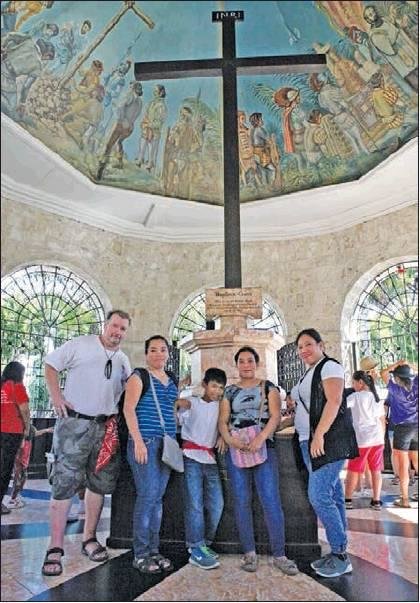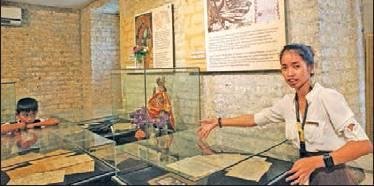Foreigners occupied Cebu for centuries
The Chronicle’s Mark Bellune traveled to Cebu, Philippines recently to see an old friend from Lexington. He learned much of the history and culture of the nation of islands in the Pacific — …
This item is available in full to subscribers.
Subscribe to continue reading. Already a subscriber? Sign in
Get 50% of all subscriptions for a limited time. Subscribe today.
Please log in to continueNeed an account?
|
Foreigners occupied Cebu for centuries
The Chronicle’s Mark Bellune traveled to Cebu, Philippines recently to see an old friend from Lexington. He learned much of the history and culture of the nation of islands in the Pacific — living with locals for 2 weeks. This is a continuing series.
On a Thursday morning I rented a car and driver to take a group of us into Cebu City for a tour of historical places. The first half of the day would be in Cebu City and the second in the mountains. Our itinerary was to take us to the Museo Sugbo or Museum of Cebu, Fort San Pedro, the Basilica of St. Antinio, Magellan’s Cross, Little Amsterdam at Siraw Peak, the Taoist Temple and the Temple of Leah. We left early, 6 adults and a 9-year-old stuffed into a small sedan.
Museo Sugbo
We were greeted at the entrance by our tour guide, Maria Katrina Repalo, a thin, energetic young woman. The island of Cebu and Cebu City are steeped in history. The museum was dedicated Aug. 5, 2008. The first foreign interactions that can be verified, according to Maria, is in pottery dating from the Chinese Sung dynasty (960-1270 AD). Cebu is also steeped in conflict from the Spanish occupation, revolution, U.S. occupation and finally the horrific Japanese occupation of World War II. On April 7, 1521, Portuguese explorer Ferdinand Magellan and his Spanish crew sailed into the harbor of Cebu. He was met by Rajah Humabon, the ruler of Subago (current day Cebu City). A week later Rajah and his wife, Amihan, and their vassals were baptized. A small island next to Cebu City held the Mactan tribe. The island now is home to coastal resorts, a statue to Lapu-lapu, and the Cebu-Mactan International Airport where I flew in from Japan. On April 27, 1521 Magellan, 50 Spaniards and 50 Cebuanos reached Mactan Island and faced the Mactan chief Lapu-lapu. The Spaniards were easily routed and Magellan killed. This was the first repulsion of a foreign invasion in Cebu, Maria said pointing to a placard. Exactly 44 years later on April 27, 1565, Maria told us, Spanish conquistadors led by Miguel Lopez de Legazpi dropped anchor in the Port of Cebu. This started the formal colonization of Cebu. The first parish of Bantayan was established by Augustinian friars in 1580. Gradually the friars established numerous towns as they converted the natives. The Spanish king in 1594 decreed that any Spanish citizen in Cebu could build one galleon a year at their own expense and dispatch it to Acapulco, Mexico, leading to a lucrative galleon trade. Cebu’s fortunes grew until trade was switched to Manila. On July 30, 1860, a royal decree created Cebu’s first customs house, formally opening the Port of Cebu to international trade.
Next: Occupations, revolution and war.
Other items that may interest you










Comments
No comments on this item Please log in to comment by clicking here